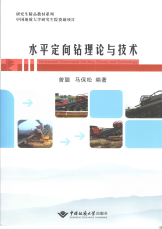
并列正书名: Horizontal Directional Drilling Theory and Technology
主要责任者: 曾聪,马保松
责任方式: 编著
出版者: 中国地质大学出版社
出版地: 武汉
字数: 300 千字
页码: 1-300
开本: 16
中图分类号: P634.7
语种:中
定价:42.00
出版时间:2015-01
丛书多卷书否:否
书目简介:本册工具书共收录102条词条。
| 词条 | 水平定向钻理论与技术 |
| 类别 | 中文百科知识 |
| 释义 |  并列正书名: Horizontal Directional Drilling Theory and Technology 主要责任者: 曾聪,马保松 责任方式: 编著 出版者: 中国地质大学出版社 出版地: 武汉 字数: 300 千字 页码: 1-300 开本: 16 中图分类号: P634.7 语种:中 定价:42.00 出版时间:2015-01 丛书多卷书否:否 书目简介:本册工具书共收录102条词条。 |
| 随便看 |
开放百科全书收录579518条英语、德语、日语等多语种百科知识,基本涵盖了大多数领域的百科知识,是一部内容自由、开放的电子版国际百科全书。